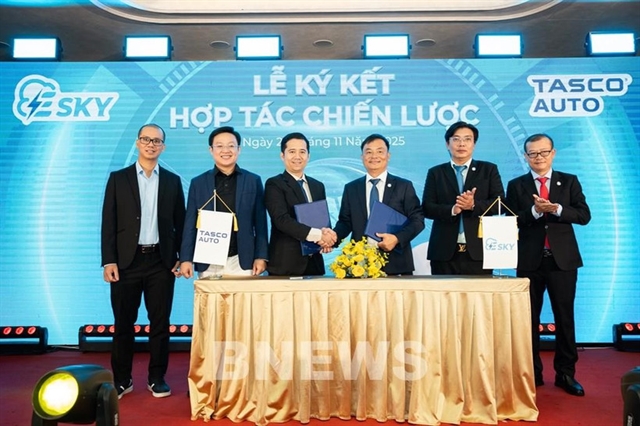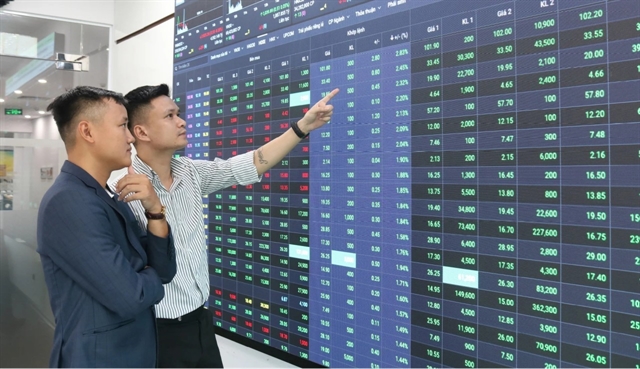 Economy
Economy


|
| Investors monitor the stock market. — Photo thoibaotaichinhvietnam.vn |
HÀ NỘI — Việt Nam’s stock market began May on a positive note following the official launch of the new KRX trading system and the start of tariff negotiations between Việt Nam and the United States.
However, amid strong resistance and still-uncertain outcomes from the tariff talks, analysts expect the VN-Index to undergo short-term consolidation before attempting to break through the 1,280-point level and move toward the psychological threshold of 1,300.
Head of Macroeconomic and Market Strategy at VNDirect Securities Đinh Quang Hinh said the recent rally largely reflected optimism surrounding the new KRX system and signs of cooling in tariff tensions.
Hinh added that the resistance zone around 1,270–1,280 points was triggering short-term profit-taking, however.
"Unless there is a strong catalyst from the Việt Nam–US talks or broader global trade developments, the likelihood of a breakout remains low," Hinh said.
Phan Tấn Nhật, Head of Research at Saigon – Hanoi Securities (SHS), shared the same view, saying that after a sharp recovery, the market has entered a consolidation phase and is forming a new equilibrium.
"The VN-Index is retesting the previous peak before the steep drop on April 3. A mild correction or sideways movement is a likely short-term scenario," he said.
Nhật added that despite improved sentiment and market trends, investors should remain cautious, as the outcome of the tariff talks is still uncertain.
“Even in the best-case scenario, retaliatory tariffs will still be imposed, putting pressure on Việt Nam’s trade balance and potentially impacting the earnings of export-oriented firms,” he cautioned.
Given these factors, experts recommend investors maintain moderate equity exposure and avoid excessive leverage. Hinh suggested that money would likely rotate between sectors, and short-term traders could consider taking profits on stocks that have surged and shift to underperforming sectors like industrial real estate, oil and gas, fisheries or electricity, which are currently supported by clearer policy signals.
Nhật added that, while the market still offers stocks trading at attractive valuations relative to their fundamentals, fresh capital inflows should be deployed selectively. "The market is now approaching the pre-tariff announcement price zone, which is no longer as appealing as before," he noted.
Between May 6 and 10, the market largely priced in expectations around two key catalysts: the KRX system and the trade negotiations. The VN-Index rose 3.34 per cent, closing the week at 1,267.3 — its highest level in more than a month. The HNX-Index also climbed 1.03 per cent to 214.13 points. Liquidity improved notably, with average daily trading volume on HOSE rising 9 per cent to over 742 million shares, and HNX jumping 28 per cent to nearly 61 million shares.
The standout performer was the Vingroup ecosystem, particularly VIC, which surged over 26 per cent in one month. Market sentiment was buoyed by the announcement that Vinpearl — a subsidiary of Vingroup — would officially list on HOSE on May 13, with an estimated valuation of nearly US$5 billion. VIC hit the daily ceiling on May 8 and was a key driver of the index.
Beyond Vingroup, sectors less exposed to trade tariffs — including media, retail, and tourism and leisure — also posted strong gains, reflecting investors’ preference for safer sectors amid global macroeconomic uncertainties.
Net profit across the listed market rose 23 per cent year-on-year in Q1 2025, extending a six-quarter streak of earnings growth, though the pace slowed from the previous quarter. However, experts predicted that future earnings growth will largely hinge on the outcome of the tariff talks and broader global macroeconomic stability. — VNS




